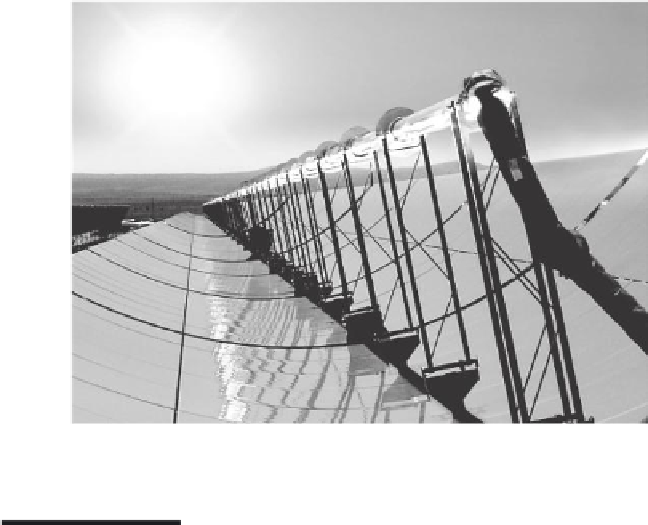Environmental Engineering Reference
In-Depth Information
Building and Industrial Process Heat ......................................................... 206
Seasonal Heating ............................................................................................ 206
References............................................................................................................. 211
Parabolic trough for concentrating solar energy to fluid in a central tube. (From http://www.
schottsolar.com/us/products/concentrated-solar-power/concentrated-solar-power-plants/)
IntroductiontoThermalEnergyStorage
A challenge in utilizing renewable energy sources, particularly solar and
wind energy, is dealing with their intermittent availability due to weather,
diurnal solar variation, and seasonal changes. One way the variable nature
of solar resources can be effectively managed is with supplemental thermal
energy storage (TES). Variable energy can be stored when excess power is
available and then discharged during periods of limited or no solar produc-
tion to meet demands for continuous power production and/or to satisfy
peaks in demand.
Beyond creating high value dispatchable power at times of low insolation,
TES has many benefits as compared to other storage types and especially
as compared with a system with no energy storage. As shown in Figure 7.1,
the round-trip efficiency of TES is very high and exceeds that of other stor-
age options. TES offers high storage efficiency for multiple hours at modest
cost. Additionally, it allows stored power to match peak demand periods,
making solar thermal energy technologies competitive with gas turbines as
capacity power sources. TES is a deployable, proven technology and can be
implemented immediately without further research. These topics and others
are discussed in detail in this chapter.

